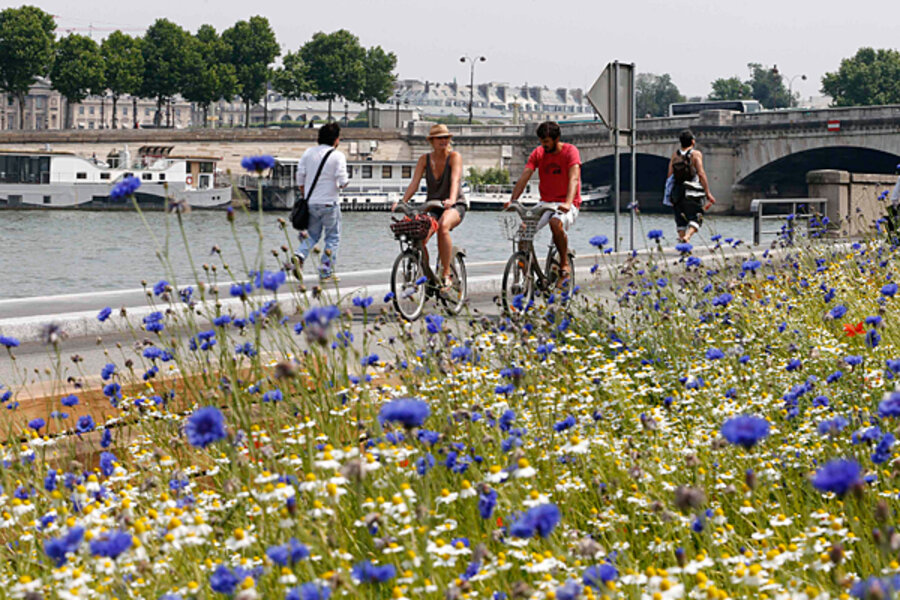Parisian etiquette, for shorts-wearing tourists and waiters alike
Loading...
| Paris
The Paris weather suddenly turning from cold and damp to hot and steamy prompted a discussion on wearing shorts at a play center where I take my daughter on Wednesday afternoons.
“I would never wear shorts,” said the older, impeccably dressed supervisor, to which I nodded in agreement. I would never wear shorts either.
But then she took it further. “It’s shocking to me to see visitors wearing shorts in Paris, even when they come from countries where wearing shorts is normal. On the beach, that is one thing. But in Paris, one should respect local customs.”
And to that, I had to respectfully disagree.
I could only imagine the looks she gives tourists, in cut-off jeans or flower-motif bermudas, lining up to enter the Louvre or Notre Dame cathedral. Such looks aren’t kind. But they are all too common. And even if shorts might not be pretty on many a tourist who wears them, they hardly rank up there in offense with halter tops at mosques.
It is this type of attitude - one might call it snobbery – that France’s promoters are seeking to undo in the tourism industry in a new campaign launched this week as summer arrives and the tourist season kicks off.
The Paris chamber of commerce and regional tourism committee have published a new manual sent off to 30,000 in the tourism industry called “Do you speak touriste?”
“The aim of this campaign is to focus on the quality of welcome that visitors receive in Paris, and to train professionals here to understand the differences between them,” François Naverro from the regional tourism committee, told The Local, an English-language news site in France.
He added that over 30 million tourists come to France each year, and while almost all leave satisfied (96 percent) there is always room for improvement – a waiter who could have been kinder, a shop clerk who could have been more helpful.
I entered the website of the campaign and found a slew of really handy information, such as conversion charts for miles and inches and shoe and shirt sizes between regions (as an American newly arrived in Paris, I plan myself on printing this out).
The site also allows you to click on a nationality to learn some basic greetings in foreign languages and about general cultural traits, like typical times for eating or preferences for greetings. Americans like to lunch at noon. And they like fast and direct service. Shaking hands is rare for Japanese. The British seek authentic experiences. Germans eat at 12:30 and value clarity of information. It’s interesting to compare cultural traits – and to look at how the French generalize other cultures (I, for one, never eat before 1 p.m.)
I looked to see if there was anything written about shorts, or clothing choices in general for hot, tired tourists who have been on their feet all day – perhaps having been on an overnight flight the night before. But unfortunately, that I did not find.






